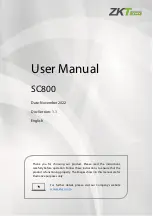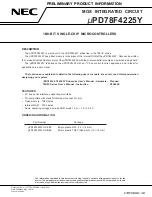
Hydraulic System Leaks Check
4000 SRM 482
the chain and crane are no longer the support.
Remove the chain and crane.
13. Install the mast operator guard and capscrews
that fasten the rear legs to the overhead guard.
14. Make all adjustments and test the operation of
the mast assembly before returning the truck to
service. See Mast Operation Check.
Mast Operation Check
Read and follow the Safety Procedures When Work-
ing Near Mast as well as all WARNINGS and CAU-
TIONS.
WARNING
DO NOT try to locate hydraulic leaks by
putting hands on pressurized hydraulic com-
ponents. Hydraulic oil can be injected into the
body by pressure.
1.
Check for leaks in the hydraulic system. Check
the condition of the hydraulic hoses and tubes.
2.
Slowly raise and lower the mast several times
without a load. The mast components must raise
and lower smoothly in the correct sequence.
NOTE:
Some parts of the mast move at different
speeds during raising and lowering.
3.
The weldments and the carriage must lower com-
pletely.
4.
Check that the controls for the carriage operate
the functions of the carriage. See the symbols by
each of the controls and refer to the Operating
Manual for your lift truck. Make sure all of the
hydraulic lines are connected correctly and do not
leak.
Hydraulic System Leaks Check
1.
Slowly raise and lower the mast several times
without a load.
On lift trucks with carriage
functions, operate the carriage functions several
times. Put a capacity (see the Nameplate) load
on the forks, and raise and lower the load sev-
eral times. Lower the load. Check for leaks and
repair as necessary.
2.
Raise the carriage and the capacity load 1 m
(3 ft). If the carriage lowers slowly with the con-
trol valve in a neutral position, there are leaks
inside the hydraulic system.
The maximum
speed that the carriage is allowed to lower is
50 mm (2 in.) in 10 minutes when the hydraulic
oil is 30 C (86
F)
. If the oil temperature is 70 C
(158
F)
, the maximum speed that the carriage
can lower is 150 mm (6 in.) per 10 minutes.
3.
Check the lift cylinders for internal leaks. Re-
move the load from the forks. Install a gate valve
in each of the supply lines between the main con-
trol valve and the mast. Put a capacity load on
the forks again. Raise the carriage 1 m (3 ft).
Close both gate valves. If the carriage or inner
mast lowers slowly, the seals in the lift cylinders
have leaks.
4.
If the carriage does not move, open both gate
valves and check the movement again. If the car-
riage lowers when the gate valves are open, check
for leaks in the hydraulic lines and fittings. If no
leaks are found, the main control valve may have
a defect. Remove the load from the forks.
5.
On Reach trucks, slowly tilt the forks forward.
If the forks continue to slowly tilt forward when
the control valve is in a neutral position, there
are leaks inside the hydraulic system. The max-
imum speed that the forks are allowed to tilt for-
ward is 13 mm (0.50 in.) per 10 minutes (mea-
sured at the tilt cylinder). This maximum speed
is measured when the hydraulic oil is 30 C (86
F)
.
If the oil temperature is 70 C (158
F)
, the maxi-
mum speed is 39 mm (1.5 in.) per 10 minutes.
36
Summary of Contents for MAST N30XMH
Page 14: ...Two Stage Mast Assembly 4000 SRM 482 Figure 10 Two Stage Mast Assembly Dual Lift Cylinders 10 ...
Page 27: ...4000 SRM 482 Three Stage Mast Assembly Figure 18 Three Stage Mast Assembly 23 ...
Page 34: ...Three Stage Mast Assembly 4000 SRM 482 Figure 21 Hose and Cable Assemblies Outer Weldment 30 ...
Page 51: ......













































